DevOps & Automation
By: Bryan Reynolds | 17 November, 2025

This article explores the 'Automation Paradox,' the phenomenon where increasing adoption of artificial intelligence and automation in enterprise settings amplifies—rather than reduces—the critical need for highly skilled human talent. Drawing from historic case studies and modern research, it warns leaders that over-reliance on automation can result in cognitive complacency, eroded expertise, and systemic risk if human oversight, judgment, and continuous upskilling are neglected. The piece provides frameworks for balancing automated, augmented, and uniquely human work, emphasizes the necessity for robust AI governance, and offers a roadmap for strategic upskilling to maximize ROI and competitive advantage in an AI-powered future.
Read MoreBy: Bryan Reynolds | 10 November, 2025

This article emphasizes the importance of preventive maintenance for software systems, highlighting its strategic benefits in reducing costs, preventing downtime, and maintaining code quality to sustain business growth and competitiveness.
Read MoreBy: Bryan Reynolds | 04 November, 2025
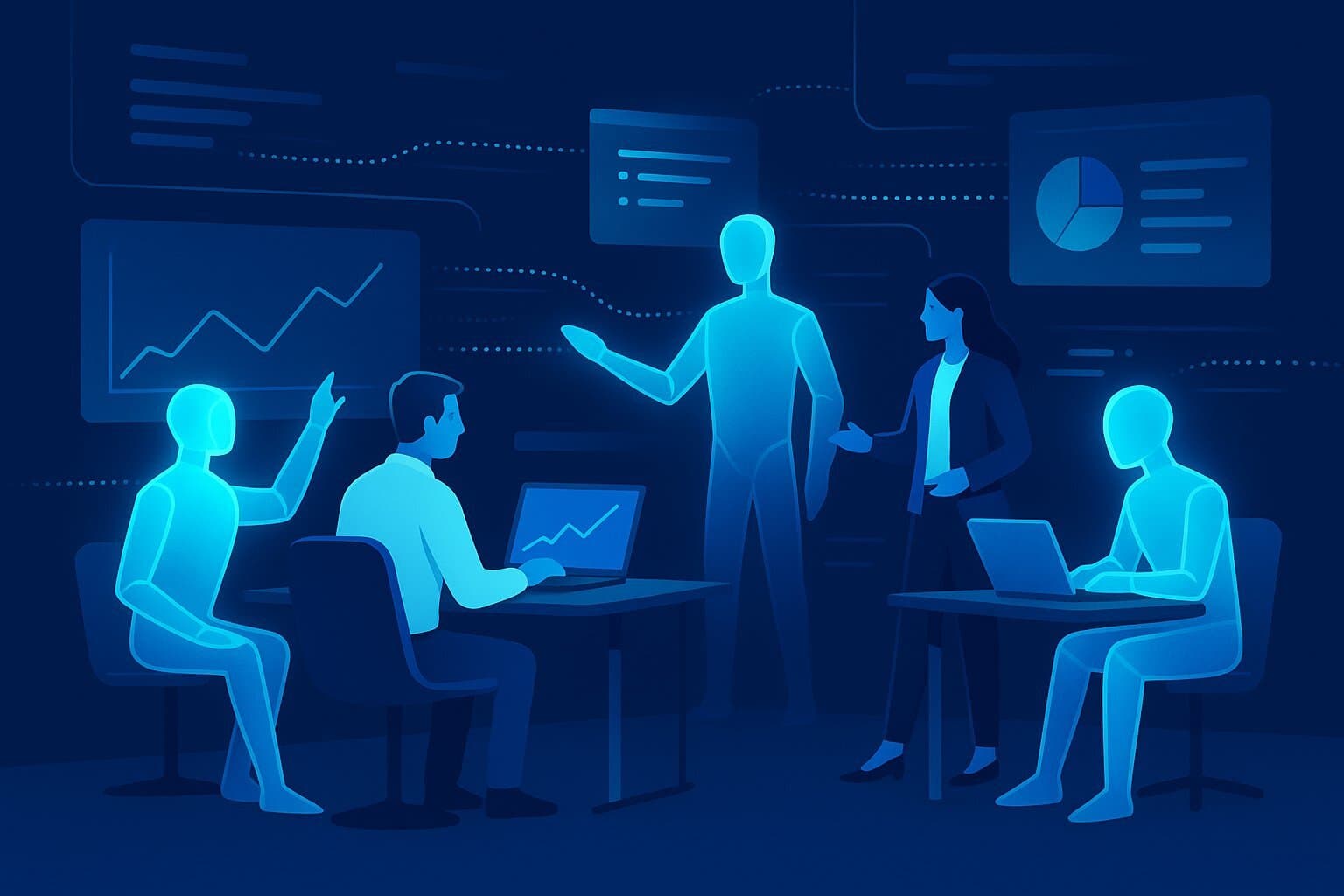
This article provides an in-depth executive guide to Microsoft AutoGen, exploring its architecture, benefits, comparisons with other frameworks, real-world use cases, and future developments in multi-agent AI systems.
Read MoreBy: Bryan Reynolds | 22 October, 2025

This executive guide explores why DevSecOps is now essential for organizations navigating the dual pressures of innovation and escalating cyber threats. It details the cultural and technical shifts required to embed security throughout the software development lifecycle (SDLC) using a phased 'Crawl, Walk, Run' approach. The article highlights the tangible business risks of inaction through recent breach case studies, outlines foundational DevSecOps principles and tools, and provides a clear action plan for leaders to build a proactive security culture and resilient technology environments.
Read MoreBy: Bryan Reynolds | 17 October, 2025
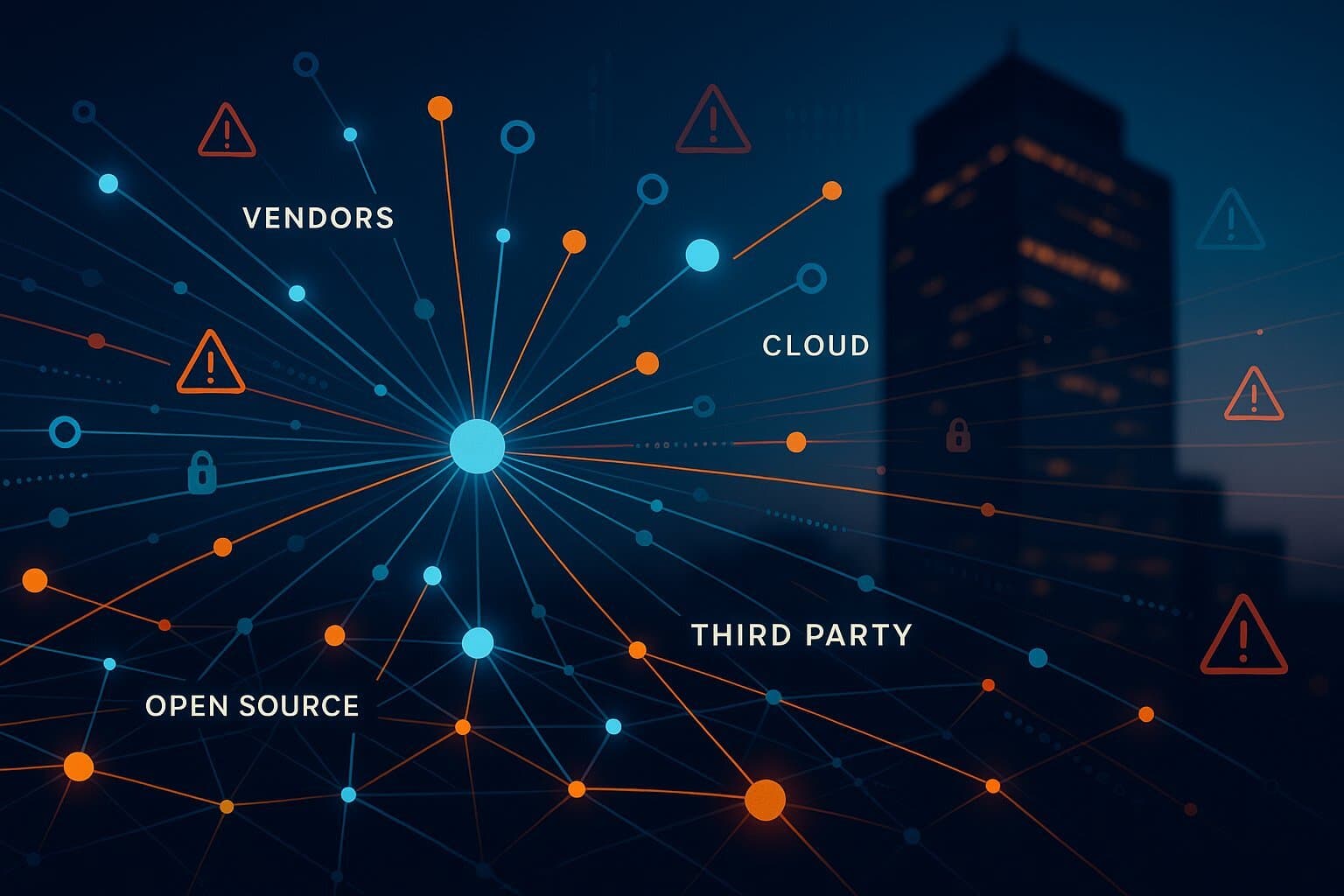
This article explores the escalating cybersecurity risks stemming from third-party vendors and digital supply chains, emphasizing how traditional 'firewall' models are obsolete in a hyper-connected business world. Citing notable breach statistics and financial impacts, it highlights the need for close collaboration between CIO, CFO, and CSCO to implement a lifecycle-based Third-Party Risk Management (TPRM) framework. The article advocates moving beyond reactive compliance towards proactive, evidence-based vendor monitoring and suggests that for mission-critical operations, organizations should consider investing in custom, secure-by-design software to mitigate systemic vulnerabilities, turning risk management into a competitive advantage.
Read MoreBy: Bryan Reynolds | 15 October, 2025
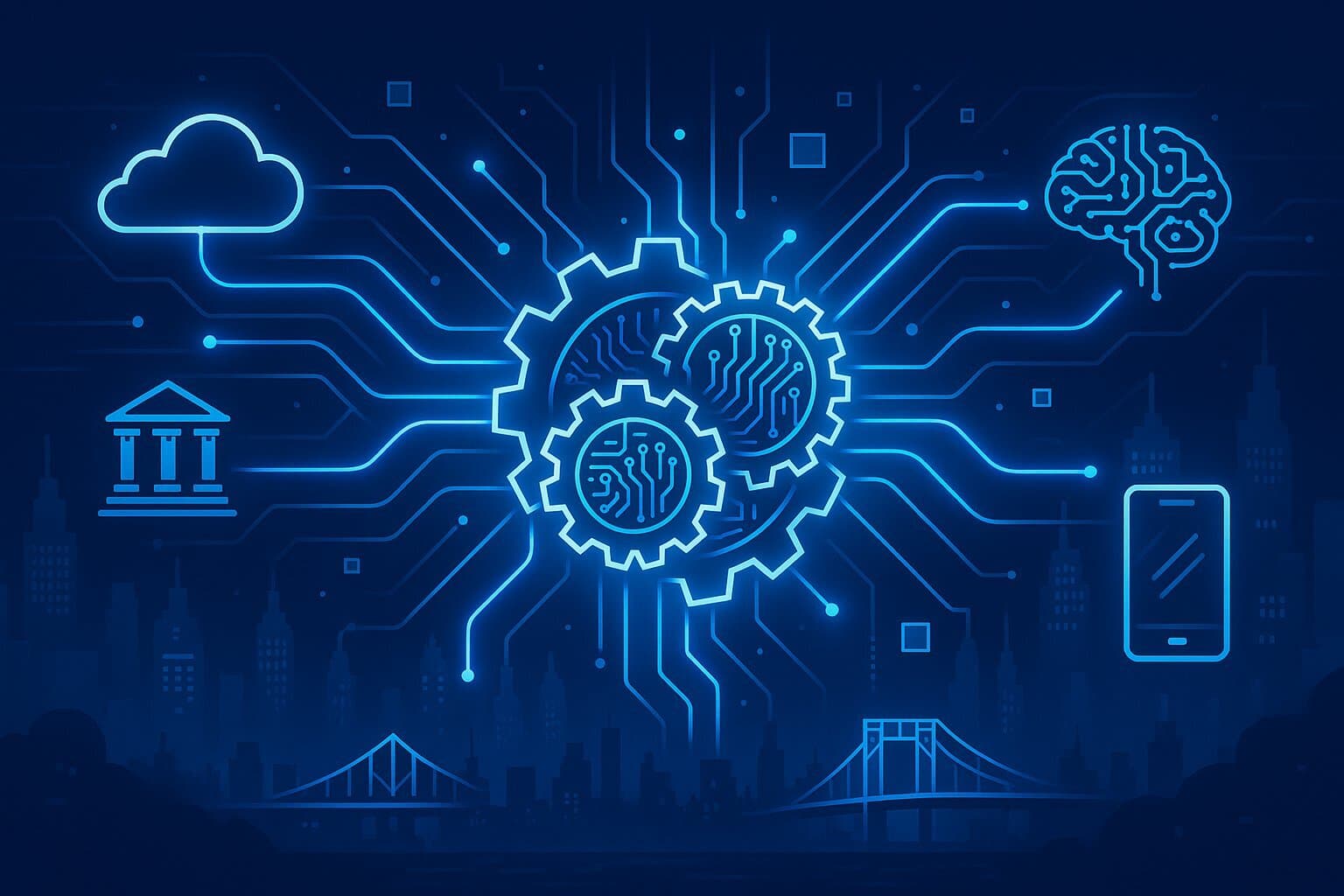
This article provides a comprehensive guide for CTOs and technology leaders on how to design, build, and monetize APIs as strategic products in the rapidly expanding API economy. It explores the paradigm shift from viewing APIs as technical integrations to managing them as valuable product assets, covering essential topics such as the API-as-a-product mindset, API product management, design best practices, technology stacks for scalable API development, governance frameworks, security strategies, and revenue models. The article also highlights future trends like 5G, AI, and Web3, demonstrating how API excellence positions organizations for digital innovation and competitive advantage.
Read MoreBy: Bryan Reynolds | 14 October, 2025

This article explores why reimagining the DevOps lifecycle as the primary security perimeter is essential in the age of AI-powered cyber threats. It highlights the limitations of traditional security models, the increasing sophistication of attacks, and the exponential cost of addressing vulnerabilities late in the SDLC. The article describes the DevSecOps approach—emphasizing Secure by Design, shifting security left, and automating security testing—and provides a practical blueprint for integrating automated security tools into Azure DevOps pipelines. It concludes by outlining the business benefits of mature DevSecOps adoption, including faster delivery, stronger compliance, and reduced risk, and offers concrete next steps for engineering leaders to begin the transformation.
Read MoreBy: Bryan Reynolds | 11 October, 2025

This article challenges the outdated stereotype of software developers as mere typists, emphasizing that true productivity in software engineering comes from creative problem-solving and systems thinking, not just writing code. Drawing on industry data and expert insights, the article dispels the myth that developer value is measured by keystrokes, illustrating how the majority of a developer's day is spent on collaboration, problem-solving, and navigating systemic blockers. It advocates for a mindset shift among organizations, promoting hiring and management strategies that prioritize critical thinking and adaptability over rote technical skills. The article also outlines actionable steps for developers, managers, and business leaders to foster environments where innovative solutions, rather than feature factories, are the norm.
Read MoreBy: Bryan Reynolds | 06 October, 2025

This article explores the tangible business benefits of investing in DevOps, with a focus on how Azure DevOps can accelerate software release cycles by up to 45%. It addresses the critical questions executives face regarding technology ROI, delves into DORA metrics for measuring DevOps success, and details how Azure DevOps drives elite performance through automation, alignment, and integration. The piece is anchored by a real-world case study from a financial services firm that achieved faster releases, improved quality, and reduced compliance costs after transitioning to Azure DevOps. Actionable steps are provided for organizations looking to calculate and realize their own DevOps ROI.
Read MoreBy: Bryan Reynolds | 04 October, 2025

This in-depth article explores the strategic and technical transformation required for enterprises to succeed in today's volatile market by adopting a composable architecture. It details why traditional monolithic systems are failing, outlines the principles and benefits of composability via the MACH framework (Microservices, API-first, Cloud-native, Headless), and demonstrates the measurable business value—such as agility, speed-to-market, improved customer experience, and risk mitigation—of moving to a modular enterprise model. The article further addresses the cultural and organizational change necessary for such a transformation, provides a pragmatic roadmap for CIOs, and quantifies ROI using real-world case studies.
Read MoreBy: Bryan Reynolds | 19 September, 2025
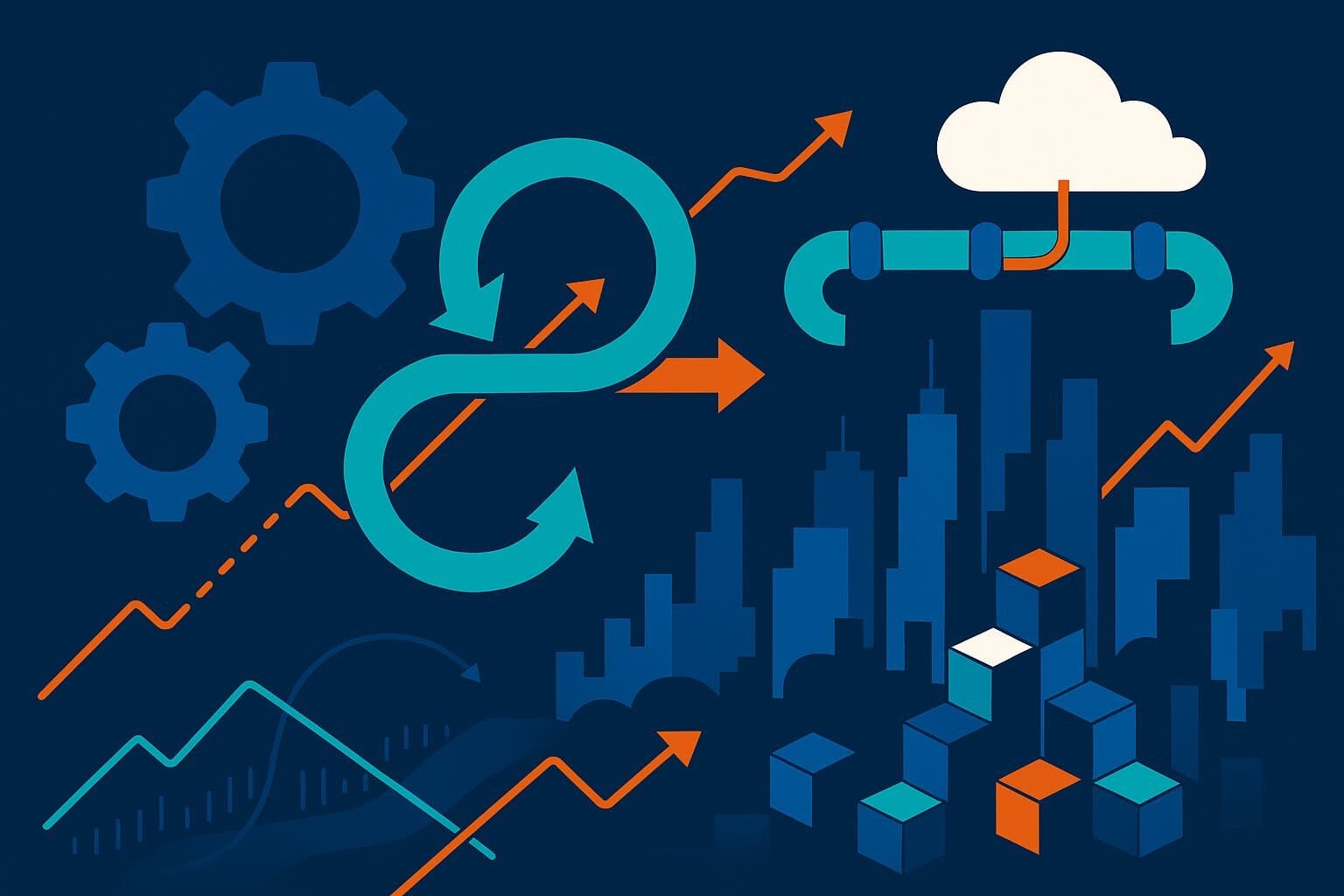
This article demystifies key software development jargon for business leaders, providing clear explanations and strategic context for terms like Agile, Waterfall, DevOps, CI/CD, and Microservices. It illustrates how these technical concepts directly influence business metrics such as time-to-market, cost, scalability, and customer satisfaction. By using analogies, case studies, and data-driven insights, the article empowers non-technical executives to make better strategic decisions, foster effective collaboration, and drive organizational agility in a competitive digital landscape.
Read MoreBy: Bryan Reynolds | 15 September, 2025

This article explains the 'Configuration Complexity Clock,' a model illustrating how software systems often become increasingly complex and fragile as organizations seek more flexibility through configuration. Beginning with simple hard-coded values, businesses progressively externalize configuration, advancing from basic config files to structured files, GUIs, rules engines, and even custom domain-specific languages (DSLs). While these steps are meant to empower adaptability, they actually generate technical debt, slow development, and increase operational risk. The article argues that modern DevOps practices minimize the risks that prompted excessive configuration, and offers a decision framework to help business and technology leaders strike the right balance between flexibility and maintainability.
Read MoreBy: Bryan Reynolds | 14 September, 2025

This comprehensive guide explores the critical post-launch phase of software, offering executives and product leaders a strategic framework for effective software maintenance and ongoing evolution. It covers the key challenges of the first 90 days after launch, explains the four pillars of software maintenance, demystifies the long-term financial commitment through Total Cost of Ownership (TCO), and details best practices for leveraging modern DevOps, cloud-native technology, and continuous feedback. It concludes by guiding decision-makers through choosing between in-house and outsourced management models to maximize value, innovation, and business agility.
Read MoreBy: Bryan Reynolds | 11 September, 2025

This article analyzes a major 2025 phishing attack that compromised popular npm open-source packages, downloaded over 2.6 billion times weekly. It details how a sophisticated phishing email targeting a trusted developer led to malicious code being published in the JavaScript ecosystem, highlighting the cascading risks businesses face from transitive software dependencies. The article frames supply chain attacks as a business-critical issue, reviews the broad operational and reputational risks exposed, and provides a practical three-tier security framework—spanning technology, process, and people—for organizations to build supply chain resilience and protect against future incidents.
Read MoreBy: Bryan Reynolds | 09 September, 2025

This executive briefing from Baytech Consulting offers a practical, business-focused guide to adopting AI agents in software development, cutting through industry hype to focus on strategic impact, costs, ROI calculation, leading tool comparison, and critical risk mitigation. The article clarifies the distinction between AI assistants (like GitHub Copilot) and autonomous agents (like Devin), outlines their capabilities throughout the software development lifecycle, and provides actionable steps for C-suite leaders to lead a successful, ROI-driven AI transformation within their engineering organizations.
Read MoreBy: Bryan Reynolds | 02 September, 2025

This article provides a comprehensive analysis of Anthropic’s new web-based Claude Code AI assistant, discussing its features, benefits, and strategic importance for enterprise software development. It highlights how Claude Code democratizes advanced, agentic AI-driven development for a wider audience, contrasts it with other leading tools like GitHub Copilot, Amazon Q Developer, and Tabnine, and offers actionable insights for IT leaders evaluating AI coding assistants. The piece covers practical adoption strategies, integration considerations (especially with Azure DevOps), and outlines best practices for successful enterprise rollout while also summarizing key market trends in AI-driven coding.
Read MoreBy: Bryan Reynolds | 28 August, 2025

The article examines the launch of xAI's Grok Code Fast 1, a disruptive new AI-powered coding assistant designed to accelerate software development with unmatched speed, scale, and cost-efficiency. It outlines the model's technical advantages—such as its Mixture-of-Experts architecture, vast context window, and transparent reasoning features—while providing a business-centric analysis of its competitive positioning against leading models from OpenAI, Anthropic, and Google. The piece offers actionable guidance for technology leaders on integrating Grok Code Fast 1 into development workflows, emphasizing intelligent, portfolio-based AI adoption strategies to maximize productivity, save costs, and foster innovation without replacing human talent.
Read MoreBy: Bryan Reynolds | 08 August, 2025

Discover how B2B leaders can optimize their software testing strategy by understanding the real costs of software bugs, implementing risk-based testing, and aligning QA efforts with critical business priorities. Learn the ideal approaches for small, medium, and enterprise projects and how to prove the ROI of your investment in quality assurance.
Read MoreBy: Bryan Reynolds | 24 July, 2025

GitHub Spark is an AI-native application platform that redefines software development by enabling rapid, natural language-driven creation and deployment of full-stack web applications. This strategic analysis explores how Spark transitions from AI-assisted to AI-native development, dramatically shortening idea-to-MVP timelines, supporting both technical and non-technical users, and integrating seamlessly with the GitHub ecosystem. The article compares Spark to competitors such as Loveable and Replit, evaluates its architecture, business value, risk profile, pricing, and offers recommendations for enterprises evaluating modern AI application platforms.
Read MoreBy: Bryan Reynolds | 10 July, 2025

Azure Synapse Analytics is Microsoft's powerful unified analytics platform that bridges traditional data warehousing and big data processing within the Azure ecosystem. The article provides an exhaustive analysis of Synapse’s core architecture, including Dedicated and Serverless SQL Pools, Apache Spark and Data Explorer integration, and Synapse Pipelines for ETL/ELT. It explores its value proposition in unifying diverse workloads, compares Synapse to competitors like Snowflake, BigQuery, and Redshift, and discusses use cases across industries. The piece also highlights strategic implications of Microsoft Fabric’s emergence and provides guidance for when and how to adopt Synapse effectively.
Read MoreBy: Bryan Reynolds | 07 July, 2025

This in-depth report explores n8n, a source-available, developer-centric workflow automation platform that distinguishes itself through powerful customization, code integration (JavaScript/Python), and self-hosting capabilities. Positioned as an alternative to tools like Zapier and Make, n8n caters to technically proficient teams seeking data control, deep logic handling, and cost efficiency—especially for complex, high-volume workflows. With support for advanced AI workflows and a flexible execution-based pricing model, n8n emerges as a formidable choice for organizations needing tailored automation infrastructure without the cost or rigidity of traditional enterprise iPaaS solutions.
Read MoreBy: Bryan Reynolds | 20 June, 2025

This comprehensive guide explores the pervasive challenges and high costs associated with inefficient data entry processes and outlines a strategic framework for organizations to optimize them. By identifying root causes, standardizing workflows, leveraging automation technologies like OCR, RPA, and AI, and empowering employees through training and ergonomic design, businesses can dramatically improve data accuracy, reduce operational costs, and enhance decision-making. The article emphasizes the importance of a coordinated, phased approach and continuous performance monitoring to transform data entry from a liability into a strategic advantage.
Read MoreBy: Bryan Reynolds | 10 June, 2025

This comprehensive analytical report explores Coder.com, a self-hosted cloud development environment (CDE) platform designed for enterprises prioritizing security, infrastructure control, and developer productivity. It examines the evolving role of the "coder" within modern software teams, delves into the platform’s unique Terraform-based infrastructure model, and compares Coder to other key CDE competitors such as Gitpod, GitHub Codespaces, and DevZero. The report outlines Coder's strategic value proposition, including enhanced security, data sovereignty, platform engineering alignment, and readiness for AI-assisted development workflows. The analysis also provides a strategic framework for deciding when Coder is the right choice based on operational complexity, compliance requirements, and organizational maturity.
Read MoreBy: Bryan Reynolds | 09 June, 2025

This comprehensive analysis explores Workato, a leading enterprise automation and iPaaS (Integration Platform as a Service) solution, examining its capabilities, architectural advantages, and role in data integration. The report compares Workato with Boomi and ServiceNow, highlighting its strengths in ease of use, cloud-native design, robust security, and integrated AI features. Workato supports ETL, ELT, and Reverse ETL workflows, positioning it as a powerful tool for both application and data integration. Its low-code approach empowers both IT and business users, while its flexibility allows organizations to streamline operations, eliminate silos, and activate data-driven automation across the enterprise.
Read MoreBy: Bryan Reynolds | 03 June, 2025

This in-depth article explores the evolving intersection of Artificial Intelligence (AI) and software development, highlighting how AI technologies—especially Generative AI, Machine Learning, and Natural Language Processing—are transforming every stage of the Software Development Lifecycle (SDLC). While AI significantly accelerates development, automates tasks, and enhances productivity, it also introduces new challenges related to code quality, security, transparency, and technical debt. The report outlines how the developer role is shifting toward orchestration and oversight, emphasizes the need for strategic planning, governance, and cultural adaptation, and provides practical guidance on AI integration, tooling choices, and success metrics. Ultimately, it positions the future of software development as a symbiotic relationship between human expertise and intelligent machines.
Read MoreBy: Bryan Reynolds | 12 May, 2025

Sentry.io is a developer-focused application monitoring platform specializing in real-time error tracking and performance insights for web, mobile, and backend applications. It offers a free plan for individual developers and scalable paid plans for teams, with unique flexibility to self-host for cost control at scale. Compared to competitors like Datadog, New Relic, Rollbar, and Bugsnag, Sentry stands out for its rich developer-centric features, strong platform support, and open-source availability. For most small-to-midsize teams, Sentry’s SaaS provides the best balance of ease and cost, while self-hosting becomes financially advantageous at very high volumes.
Read MoreBy: Bryan Reynolds | 09 May, 2025

Azure DevOps is a comprehensive, all-in-one DevOps platform by Microsoft that streamlines the entire software development lifecycle, from planning and coding to building, testing, and deploying. It offers integrated services like Azure Boards, Repos, Pipelines, Test Plans, and Artifacts, making it ideal for organizations seeking efficiency, quality, and continuous delivery. Compared to alternatives like GitHub, GitLab, Jira, Jenkins, and CircleCI, Azure DevOps excels in end-to-end traceability, deep Microsoft ecosystem integration, and robust project management, though it may lag behind in community size and cutting-edge open-source features.
Read MoreBy: Bryan Reynolds | 08 May, 2025
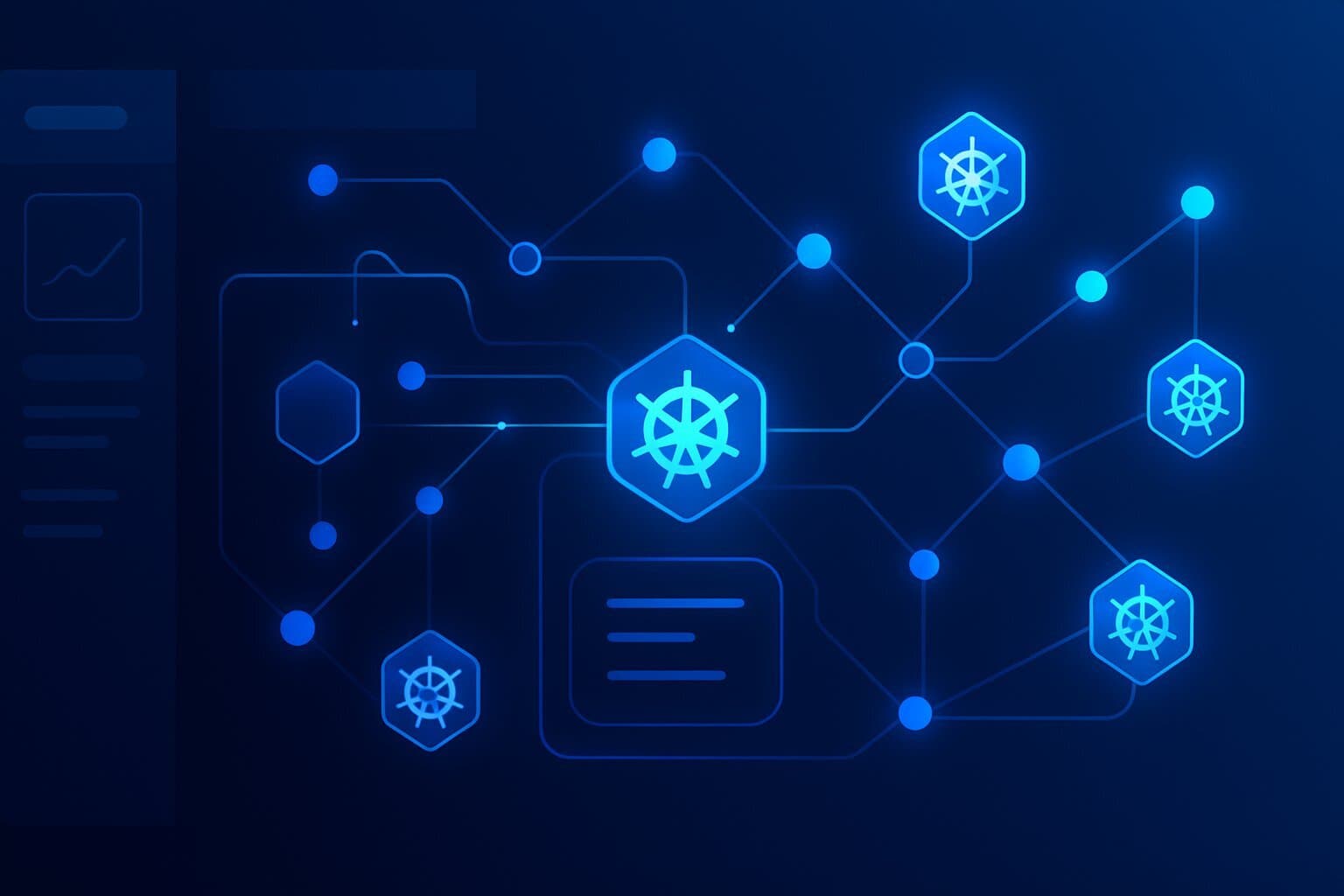
Argo CD is an open-source continuous delivery (CD) tool built for Kubernetes that uses a GitOps approach to automate application deployments. It ensures that the live state of applications always matches the desired state stored in Git, providing faster, more reliable, and auditable deployments. Unlike Jenkins, which is primarily a continuous integration (CI) tool and requires complex pipeline scripting, Argo CD is Kubernetes-native, easier to scale, and simpler to manage, particularly for SaaS companies looking to streamline operations and reduce downtime. It is free to use, integrates deeply with Git and Kubernetes, and is widely adopted by major SaaS and enterprise companies like Intuit, Adobe, and Capital One to improve deployment consistency, developer productivity, and operational scalability.
Read MoreBy: Bryan Reynolds | 06 May, 2025

This comprehensive analysis examines the state of DevOps in 2025, highlighting how AI/ML integration, platform engineering, GitOps, and DevSecOps are transforming software development and delivery. With global adoption reaching 80% across industries and market growth projected at 20.1% CAGR, DevOps has become a strategic imperative despite challenges like cultural resistance and skill gaps. The article explores emerging trends including self-healing systems, developer experience optimization, and sustainable practices that will shape the future DevOps landscape beyond 2025, providing organizations with actionable insights to navigate this rapidly evolving ecosystem.
Read MoreBy: Bryan Reynolds | 18 July, 2024

Agile software development, born from iterative methods dating back to the 1950s, prioritizes collaboration and adaptability. It challenges traditional waterfall approaches, offering frameworks like Scrum and Kanban to enhance productivity and innovation across industries beyond software. Exploring the evolution, frameworks, benefits, and future trends of Agile methodologies, this article delves into its history, application across industries, and its transformative impact on software development and beyond.
Read MoreBy: Katarina Rudela | 07 February, 2023

With cyber security an increasingly common concern for millions of people, developing software that features robust security measures built-in is essential for delivering confidence to the end user. Find out how security and DevOps are reshaping software development to meet these new challenges.
Read MoreBy: Bryan Reynolds | 27 December, 2022

Many possible approaches to software testing exist, based on their components and the emphasis given to each one. These approaches often have names based on the shape of their graphical representation, such as pyramid testing. This method has been in common use for decades, but a variation known as the trophy is a more recent development. Today’s testing teams often compare pyramid testing with trophy testing when deciding how to test software.
Read MoreBy: Katarina Rudela | 12 August, 2022

Behind every well-polished and perfectly-functioning software program is a rigorous quality assurance process designed to iron out all the kinks and ensure that the finished product is one that its users will love. However, implementing an effective quality assurance process throughout the development of your application or software solution is often easier said than done. In this article, we'll explore everything you need to know in order to formulate a quality assurance strategy that will make your next software development project as successful as possible.
Read MoreBy: Katarina Rudela | 29 April, 2022
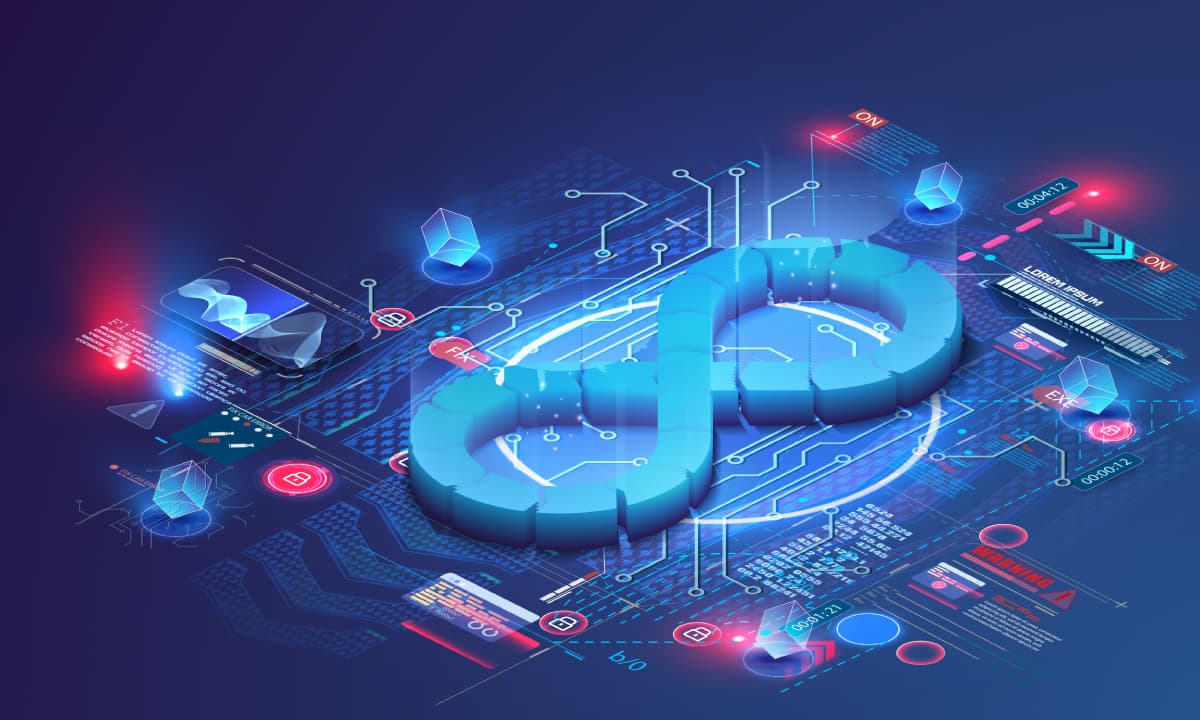
Continuous delivery is a software development practice that offers a wide range of benefits, from faster times to market to lower costs to higher quality products. However, continuous delivery is also a practice that entails a number of hurdles that must be overcome. To help you overcome these hurdles in order to enjoy the many benefits offered by the continuous delivery approach, we'll cover everything you need to know about continuous delivery, including what it is, how it works, and the important pros and cons to consider before you decide if continuous delivery is the right approach for your next software development project.
Read MoreBy: Katarina Rudela | 25 March, 2022

The benefits of DevOps for modern software development include faster delivery, better quality, and greater customer satisfaction. The COVID-19 pandemic has further accelerated the adoption of this development methodology due to the increased need for remote collaboration. A range of DevOps trends will dominate this landscape in 2022.
Read More

